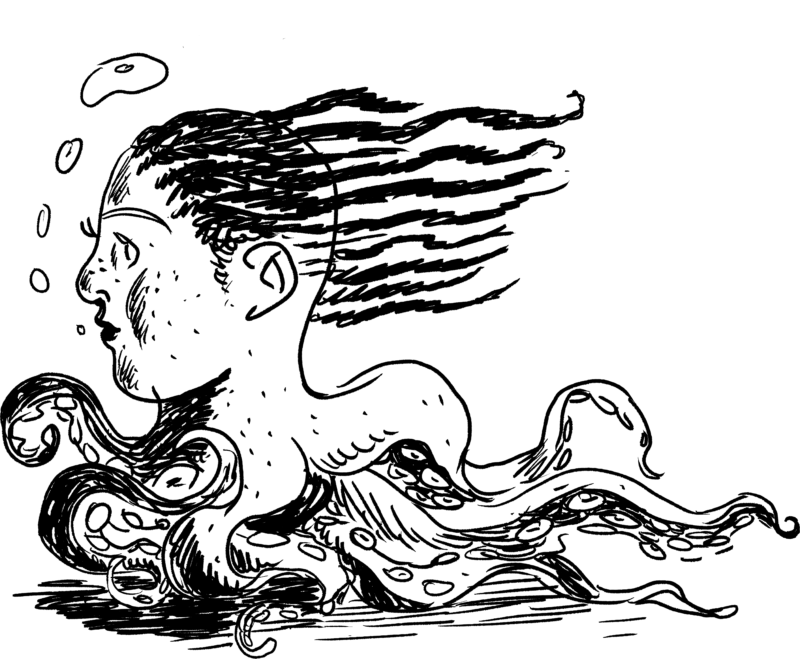An octopus slips off what appears to be a dissection table and goes for a stroll. It flits across the laboratory floor, slides out a window, hoists itself over the face of a doll, slithers through the crook of a tree, and plops into an aquarium, where it briefly explores a human skull. Then it enters the sea and swims out of frame. We are witnessing the opening sequence of The Octopus at the film’s premiere. It is 1928, and Jean Painlevé, silent-film auteur and son of the former prime minister of France, has pioneered nothing less than a new way of seeing.
Though he was not the first filmmaker to take the camera underwater, Painlevé might have been the first to truly grasp the cinematic potential of the life aquatic. Over the course of a five-decade career that spanned some twenty-nine theatrical documentaries (plus many more as producer) and more than a hundred scientific articles and research films, he cast in starring roles the likes of the stickleback, octopus, shrimp, sea urchin, seahorse, hermit crab, lobster, water flea, and freshwater hydra. Imbued with a surrealist spirit, Painlevé’s investigations into the unknown lives of animals seem to defy genre, occupying an unlikely, uncanny space between science and cinema, pedagogy and mythology.
Yet to envision is, in some sense, to invade, to penetrate, to pry. Though he tried, Painlevé never quite accustomed himself to the cruelty required to expose the intimate parts and processes of marine creatures to scientific scrutiny. “I find it terrifying that I can exercise authority just because I’m the strongest,” he later confessed. “It’s always bothered me in my films, no matter the subject.” Instead, Painlevé preferred to “integrate” himself into the ocean, where he could encounter “animals in their own home, at their level, and not above them.”
Painlevé conceived of cinema as a form of free inquiry, a way of asking questions about the universe without presupposing a clear answer, or any answer at all—of being led by the camera’s omnivorous curiosity. Employing close-ups and sudden shifts in scale, his documentaries reveal disorienting new realities detail by detail, cell by cell, node by node. We see the undulations of rock urchins and the suckers of cephalopods appearing somehow both concrete and abstract, earthly and alien, comic and tragic, spectral and alive; perhaps we begin to understand “crustaceans as creatures that are hard and...
You have reached your article limit
Sign up for a digital subscription and continue reading all new issues, plus our entire archives, for just $1.50/month.
Already a subscriber? Sign in





